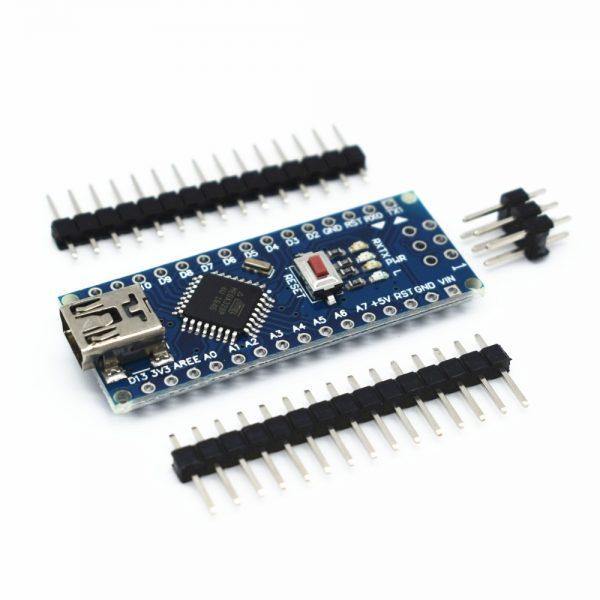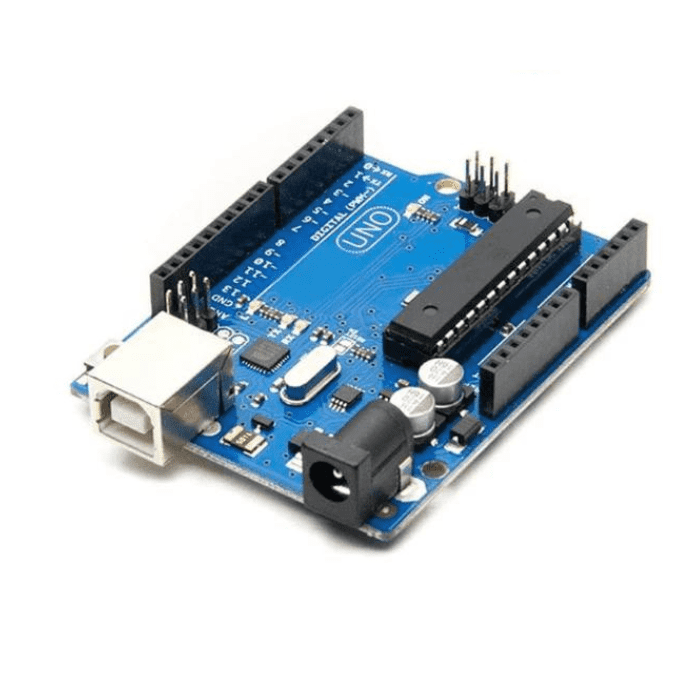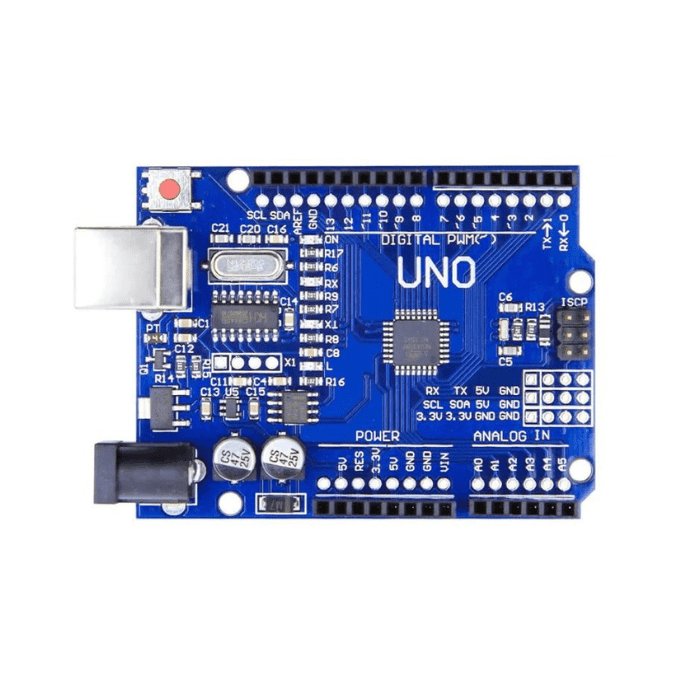Arduino boards, small-scale microcontrollers that facilitate the implementation of electronic projects, are endowed with a multitude of functionalities, namely, input/output pins, analog-to-digital converters, timers, and serial communication interfaces that enable their application in a diverse range of domains. However, it must be emphasized that not all Arduino boards are equivalent in their suitability for various projects, as some may be more appropriate than others in different circumstances. In this article, we will discuss compatible Arduino boards that are ideal for beginners.
What are Compatible Arduino Boards?
Compatible Arduino boards are boards that are designed to be compatible with the official Arduino boards. These boards use the same microcontroller chips as the original Arduino boards, such as the Atmel AVR, SAM, or ARM Cortex. and have the same pinout as the official boards. The difference is that they are produced by third-party manufacturers, which makes them more affordable than the official boards. Compatible boards are also known as "Arduino clones" or "Arduino-compatible boards."
Benefits of Compatible Arduino Boards
There are several benefits of using compatible Arduino boards, such as:
- Cost-effectiveness: Compatible Arduino boards are often cheaper than original Arduino boards, which can save you money, especially if you are working on a tight budget.
- Variety: Compatible Arduino boards come in different sizes, shapes, and features, which can suit different projects and preferences. You can choose a board that fits your specific needs, whether you need more I/O pins, a smaller footprint, or a faster processor.
- Availability: Compatible Arduino boards are widely available online and offline, from various vendors and manufacturers. You can easily find a board that is in stock, ships to your location and has good customer reviews.
- Community support: Compatible Arduino boards are supported by the same Arduino community that supports the original Arduino boards. You can find plenty of tutorials, examples, libraries, and forums that can help you get started with your board, troubleshoot issues and learn new skills.
read more : Arduino Pin Configuration
Difference between Original and Compatible Arduino Boards
The main difference between original and compatible Arduino boards is their source and branding. Original Arduino boards are designed and manufactured by Arduino LLC, an open-source hardware company based in Italy. They bear the Arduino logo, trademark, and quality control, and are sold through official channels, such as the Arduino store or authorized distributors.
Compatible Arduino boards, on the other hand, are made by third-party companies or individuals, who use the Arduino design files, specifications, and software to create their own boards. They may or may not use the Arduino name or logo, and are not subject to the same quality control as the original Arduino boards. However, they are still compatible with the Arduino IDE and libraries and can provide similar functionality to the original Arduino boards.
read more : Which Arduino Board to Buy
Importance of Choosing the Right Compatible Arduino Board:
Choosing the right compatible Arduino board is crucial for the success of your project, as it can affect its performance, reliability, and compatibility. In order to attain maximum efficiency and effectiveness, it is of paramount importance to meticulously select a board that is in accordance with or surpasses the requirements of your project, while being cost-effective, facile to operate and program, accompanied by comprehensive support and documentation, and sourced from a reputable provider. Failure to adhere to these guidelines could result in an array of issues such as glitches, system failures, compatibility discrepancies, project delays, and could potentially impede your progress towards your goals.
Choosing the Right Compatible Arduino Board:
When choosing a compatible Arduino board, there are several factors to consider, including:
- Board size: Consider the size of your project and choose a board that fits your requirements. For smaller projects, a board like the Arduino Nano may be a better choice, while larger projects may require a board like the Arduino Mega.
- Microcontroller: Choose a board that uses a microcontroller that is suitable for your project. For example, if you need more memory or processing power, choose a board that uses a more powerful microcontroller like the Atmega2560.Pinout: Make sure that the board's pinout matches your project's requirements. Most compatible boards have the same pinout as the official boards, but it's still important to double-check.
- Budget: Consider your budget and choose a board that fits within your budget. Compatible boards are generally more affordable than official boards, but prices can still vary depending on the features and specifications.
read more : What is Arduino UNO
Types of Compatible Arduino Boards
There are many types of compatible Arduino boards, each with its own features, advantages, and disadvantages. Here are some of the most popular ones:
Arduino Uno Compatible Boards:

These are the most common and basic compatible Arduino boards, with 14 digital I/O pins, 6 analog input pins, a USB port, and a power jack. They are good for beginners, prototyping, and simple projects.
Arduino Nano Compatible Boards:

These are smaller and more compact versions of the Arduino Uno, with the same pinout and features, but without a power jack or USB-to-serial converter. They are ideal for space-constrained projects, wearable electronics, or remote control.
Arduino Mega Compatible Boards:

These are larger and more powerful compatible Arduino boards, with 54 digital I/O pins, 16 analog input pins, 4 UARTs, a USB port, and a power jack. They are suitable for advanced projects, robotics, and automation, that require more I/O pins and processing power than the Arduino Uno.
Arduino Pro Mini Compatible Boards:

These are smaller and simpler versions of the Arduino Uno, with a similar pinout and features, but without a USB port or onboard regulator. They are ideal for low-power projects, embedded systems, or remote sensing, that need to conserve space and power.
Arduino Leonardo Compatible Boards:

These are compatible Arduino boards that use a different microcontroller chip than the other Arduino boards, namely the ATmega32u4. They have 20 digital I/O pins, 12 analog input pins, a USB port, and built-in USB HID (Human Interface Device) capabilities. They are suitable for projects that require keyboard, mouse, or joystick emulation, such as game controllers, MIDI instruments, or input devices.
read more : Arduino Pin Configuration
Factors to Consider When Choosing Compatible Arduino Boards
When choosing compatible Arduino boards, you should consider several factors, such as:
Project requirements:
What kind of project are you working on, and what are its specifications, such as size, power, sensors, actuators, and communication? You should choose a board that meets or exceeds your project's requirements, and has enough I/O pins, processing power, and memory to handle your code.
Budget:
How much money do you have to spend on the board, and what is the price range of the compatible Arduino boards that meet your project's requirements? You should choose a board that fits your budget, but also offers good value for money, in terms of quality, features, and support.
Ease of use:
How easy is it to program, debug, and connect the board to your computer or other devices? You should choose a board that has clear documentation, reliable drivers, and compatible software tools, and that doesn't require a lot of tinkering or troubleshooting.
Support and documentation:
How good is the vendor's or manufacturer's customer support, and how helpful is the Arduino community in answering your questions and solving your problems? You should choose a board that has good support channels, such as email, chat, or phone, and that has a rich repository of tutorials, examples, and forums, that can help you learn and improve.
Availability:
Is the board in stock, and can it be shipped to your location, in a reasonable time frame and cost? You should choose a board that is readily available, from reliable sources, and that has a good track record of delivery and customer satisfaction.
read more : Difference Between Arduino and Raspberry Pi
Conclusion:
Compatible Arduino boards are a great alternative to the original Arduino boards, as they offer similar features and compatibility, but at a lower cost and wider variety. However, you should choose them carefully, based on your project's requirements, budget, ease of use, support and documentation, and availability, and make sure to buy them from reputable sources. By choosing the right compatible Arduino board for your project, you can unleash your creativity and innovation, and bring your ideas to life, in a fun and engaging way.
Final Thoughts:
Using compatible Arduino boards presents more than just an economical alternative to the original Arduino boards. These boards open the gateway to creativity, innovation, and learning, for a diverse range of individuals, from hobbyists and makers to educators and professionals. These boards allow for the exploration of the extensive world of electronics and programming, offering the freedom to experiment with various components such as sensors, actuators, displays, and wireless modules. The interactive and responsive systems created from these components have the potential to solve real-world issues or entertain and inspire others. Do not let hesitancy hold you back from exploring and unlocking the boundless possibilities presented by these compatible Arduino boards. Take the chance to see what you can achieve with them!
If you appreciate our work don't forget to share this post and leave your opinion in the comment box.
Please do check out other blog posts about Popular electronics
Make sure you check out our wide range of products and collections (we offer some exciting deals!)
















